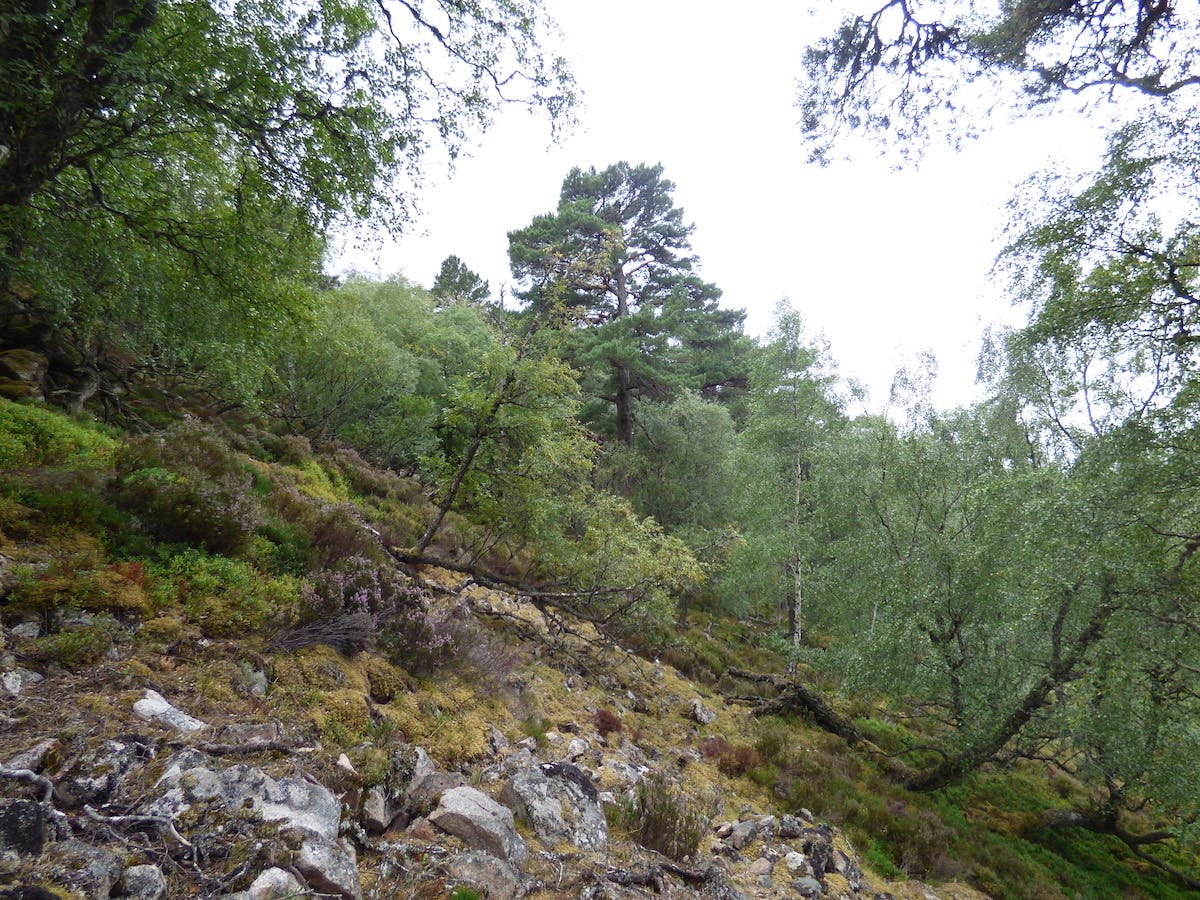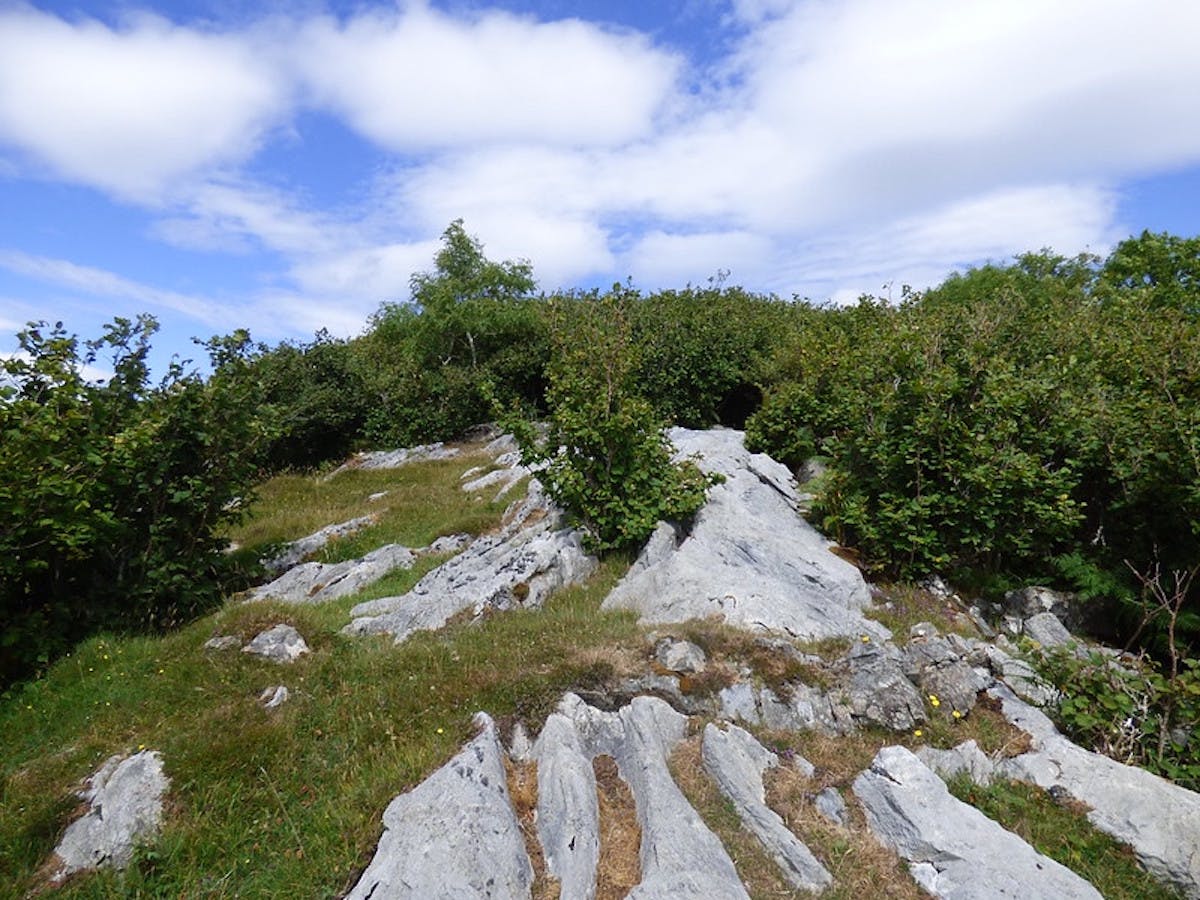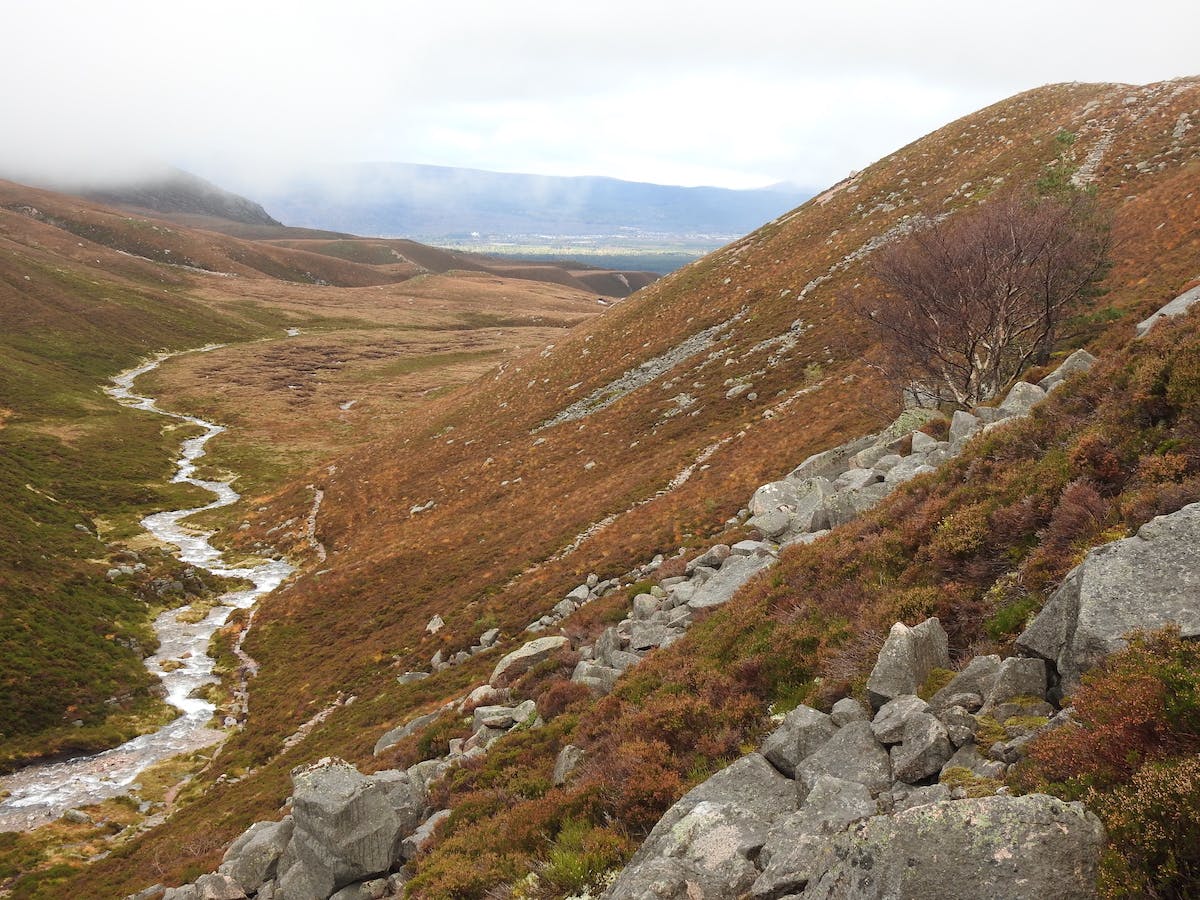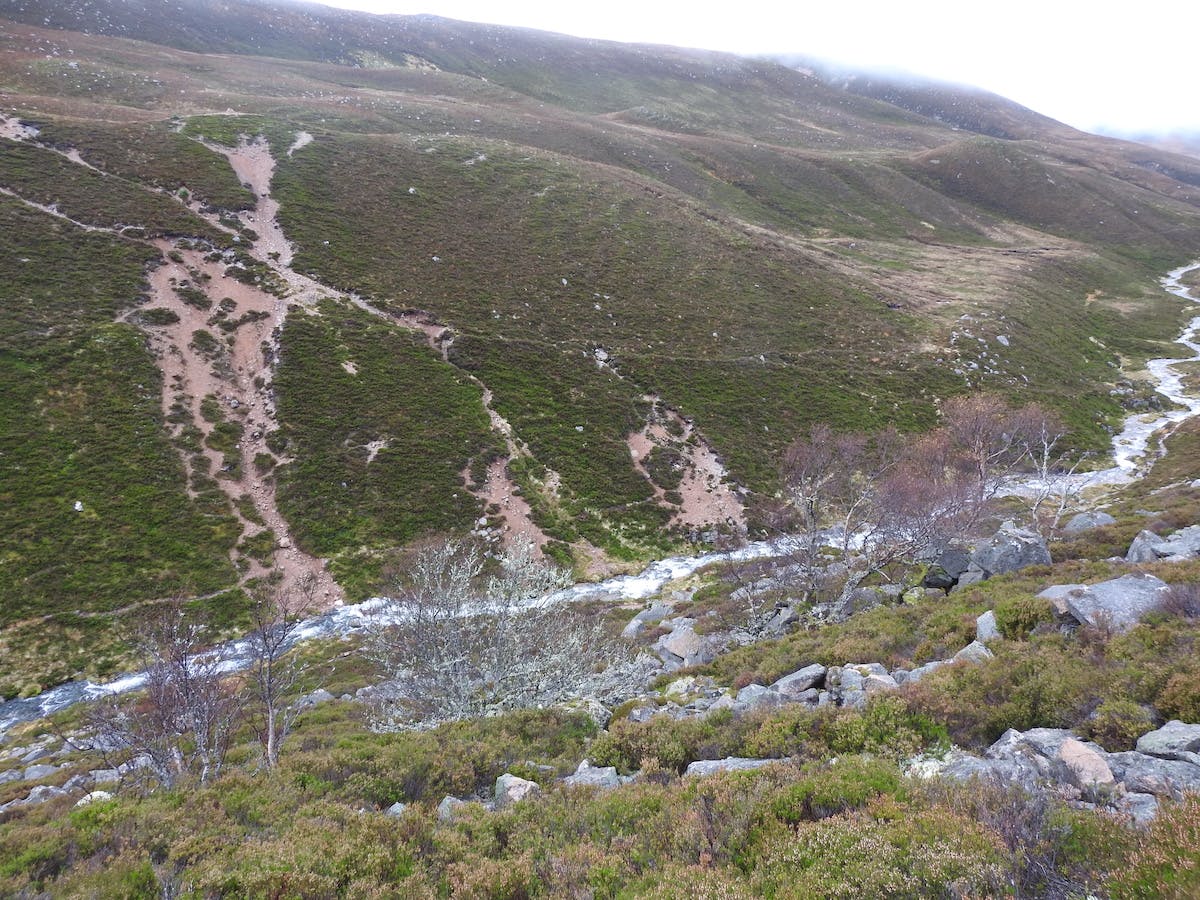- Management Plan
- Total budget: £27,449
- Budget spent: £11,403
- Status: In Progress
Montane woodland is a virtually extinct habitat in Scotland. Of the 5.1% of native forests in the Scottish Highlands, only a mere 4% exists above altitudes of 400 metres. Although important restoration schemes are working to restore Caledonian pine forest, temperate rainforests and montane willow scrub, a missing piece of the landscape is largely, if not completely neglected - mountain birch woodland. In what should be a transitional zone between lower and higher mountain woodlands, high-altitude adapted species like mountain birch have all but disappeared, leaving a gap in this ecological niche. This Mountain Birch Project (MBP), led by Reforesting Scotland, aims to progress efforts to reinstate mountain birch woodland in Scotland. It will involve locating remaining fragments, mapping their distribution and seed collection and propagation, as well as the establishment of a seed orchard.
Project Timeline
July 2023 - December 2026
Seed orchard project planning, site preparation and planting (dependent on seed availability).
May - December 2023/2024/2025
Contacting landowners, field visits (dependent on seed set) and distributing seeds to tree nurseries.
The fading ‘birch belt’
The vast open landscapes of the Scottish Highlands provide an awe-inspiring image of nature for many people. However, it’s increasingly recognised that all is not well ecologically. Centuries of human-induced pressures and neglect have gradually diminished the diversity of habitats with some entirely disappearing. One of these habitats is known as the ‘birch belt’ (or perhaps ‘birk belt’ in Scots), which should sit at around 650-800 metres above sea level in Scotland. This band of montane woodland, largely dominated by mountain birch, should occupy the space above the line of Scots pine woodlands and below the higher zone covered in montane willows. In this ecotone (a region between two biological communities), biodiversity can often be rich.
Mountain birch woodland in Norway provides a good example of such diversity. In the southwest of the country, a variety of broadleaved tree species exist in a relatively open canopy. Where the climate, geology, topography and ecology are similar to that of Scotland, species such as birch, rowan, aspen and willows thrive. Among them patches of tall shrubs like downy willow, juniper and dwarf birch are interspersed with boggy glades and wind-clipped heath. This offers habitats for mountain birds, mammals, herbs, ferns, mosses, lichens and other species that currently have to occupy other niches in Scotland. Iconic birds like the red and black grouse would seek food and shelter here from the brunt of the harsh weather at higher altitudes.

The drivers of degradation
The deterioration of mountain birch woodlands in the Highlands is largely put down to excessive levels of herbivore pressures on the land. Over centuries, Scotland’s woodlands have been held back from naturally regenerating due to overgrazing by deer, sheep, goat or cattle.
Muirburn, the practice of burning off old growth on heather moors to encourage new growth for grazing, is also thought to be affecting population numbers. Added to this, genetic impoverishment is an issue as stands of mountain birch are becoming rarer to find in Scotland. If progress is made in tackling the issue of overgrazing in Scotland, then restored mountain birch woodlands can act as nuclei of diversity from which the habitat can spread.
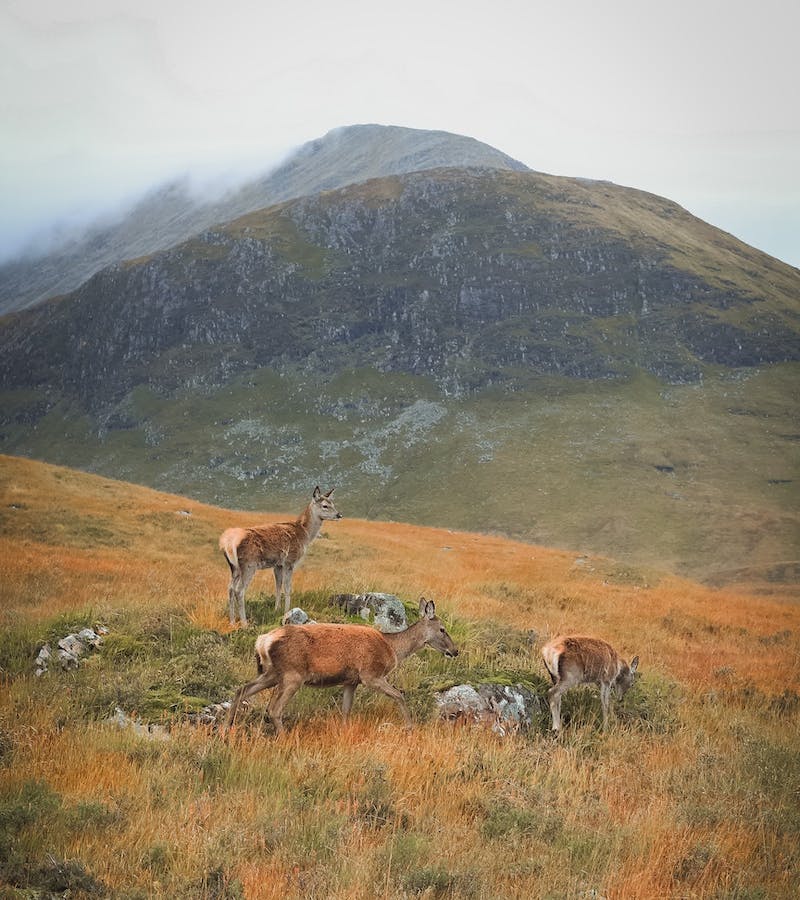
Why target this high-altitude species?
This habitat is functionally extinct in Scotland. Due to shifting baseline syndrome, this issue is practically unknown in the Scottish upland conservation/ecology sector. A lack of awareness of the role of mountain birch in the Scottish uplands is, in some cases, hindering its return.
The importance of mountain birch as a montane tree species becomes more apparent considering its adaptation to high altitudes. Low-ground provenance birches have not fared well trying to establish when used in mountain woodland restoration efforts thus far. Experience from organisations such as the Borders Forest Trust indicate that low-altitude downy birch fail to grow at higher elevations. As such, mountain birch has an important role in mountain woodland restoration in Scotland and its scarcity means locating and propagating remaining fragments is a priority.
Another benefit of restoring mountain birch is that with a more complete montane habitat there would be an opportunity for currently extinct species to recolonise or be reintroduced, such as bluethroat and alpine blue-sow-thistle. Restoring mountain birch woodlands contributes to the overall restoration of Scotland's upland landscapes. It’s part of the effort to address the loss of native forest cover that, if restored, would promote a more diverse and healthy ecosystem.
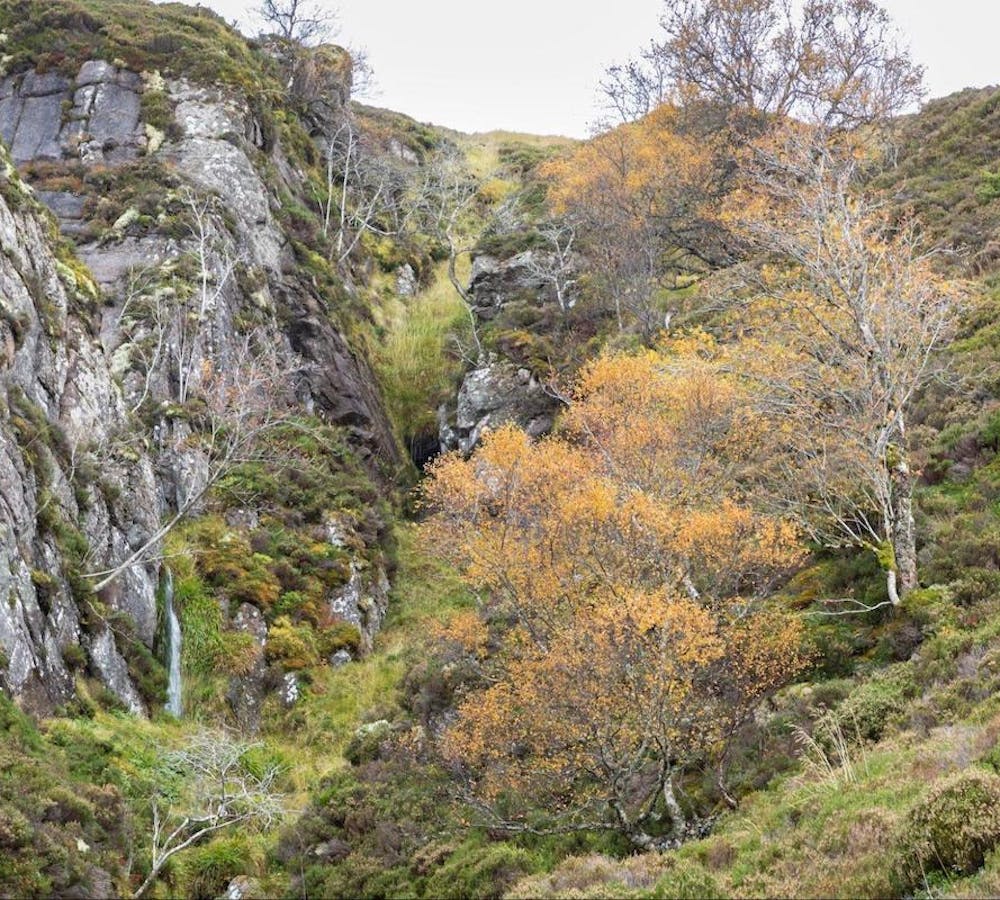
Our Project
The overarching goal of this project is to reinstate mountain birch woodland in Scotland. Currently, there is a lack of access to high-altitude-adapted birches and because of this, we risk losing the last remaining fragments before they can be protected or studied.
Existing mountain woodland restoration schemes tend to focus on threatened and declining species like willows, dwarf birch and juniper, and not mountain birch. This could be in part due to a lack of awareness that low-ground birches will not fill the role of the missing high-ground birches, and possibly because downy birch is a common species in Scotland while willows are threatened. Numerous schemes have, however, already expressed interest in using mountain birch as part of landscape-scale restoration efforts if seed is available. This list includes Cairngorms Connect, Mar Lodge Estate, Corrour Estate, Borders Forest Trust, John Muir Trust, and Trees for Life.
Our efforts will therefore work towards reinstating mountain birch on several fronts:
- Locate remaining fragments of mountain birch: through research (using maps and literature) and field visits of potential sites. The sites will be GIS mapped and shared with other researchers.
- Distribute seed: seed collected from identified sites will be grown at nurseries and distributed to be used in existing mountain woodland restoration schemes. This stage will require contacting and engaging landowners in addition to developing relationships with tree nurseries such as Elsom’s.
- Establish a seed orchard/birch belt garden: at altitudes of 650-800m alongside other species typically found in the birch belt. The aim is to improve propagation efforts by facilitating seed collection and creating more genetically varied mountain birch seed. Additionally, this would promote outreach efforts and help raise awareness by allowing people to experience a diverse ‘birch belt garden’.
- Raise awareness of the role of missing high-ground birches: through Mossy Earth’s YouTube channel and social media; citizen science initiatives that encourage people to report high-altitude broadleaved trees they find in Scotland; meeting with interested bodies/partners; presenting the case for mountain birch to government bodies; visiting established mountain birch woodland in Norway to allow for effective reconstruction of the habitat and help people understand just how much Scotland’s biodiversity could gain from reinstating mountain birch.
Image below: A particularly contorted mountain birch in Norway. Credit: NINA/Duncan Halley
Get Involved - Help us find Mountain birch!
You can help us with our mission by reporting any mountain birch you find. Whether you're a regular to the hills or just visiting, let us know if you spot any of the remaining species of this forgotten habitat. Click here to see details of what to look for and where to find them, then submit your findings!
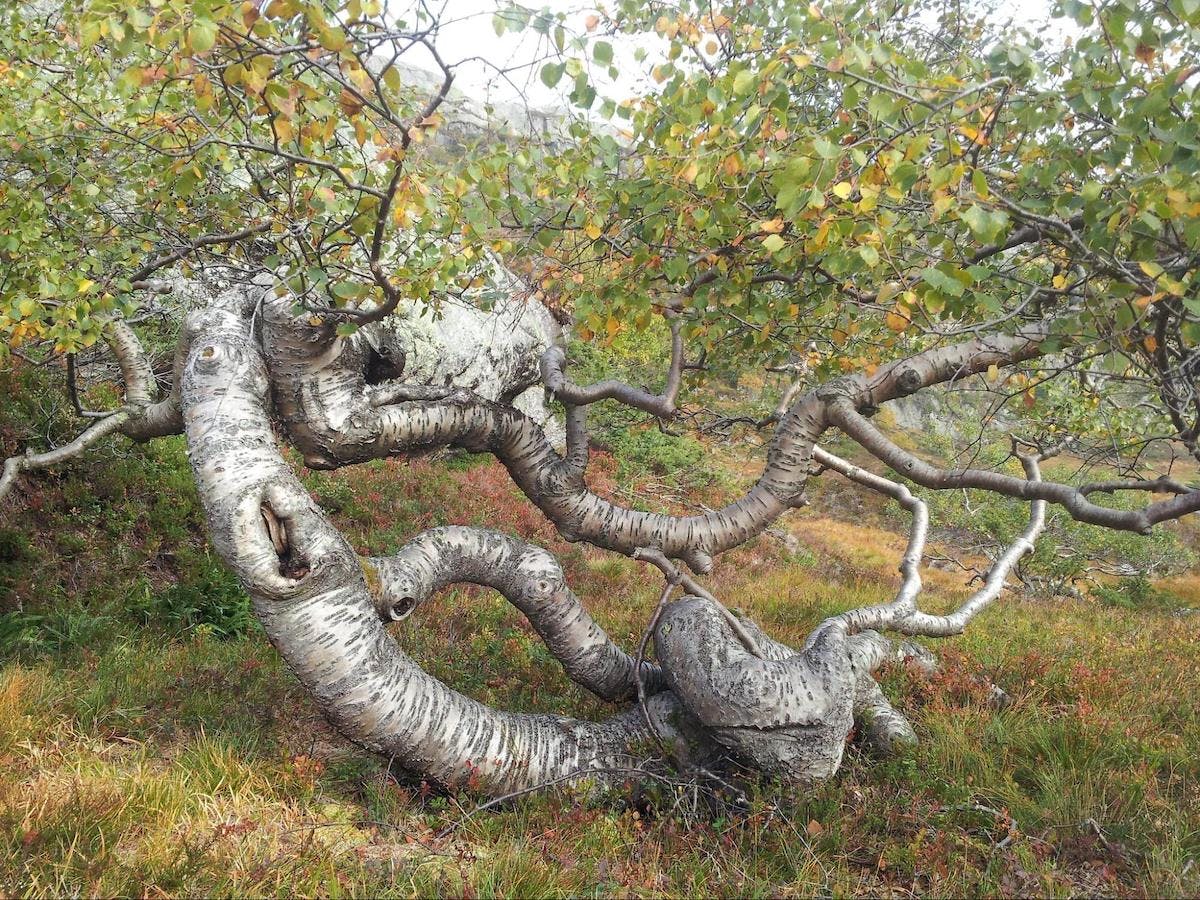
Bringing others on board
The planned activities of this project, which you can see more details of in our management plan, are designed to engage and involve a wide range of stakeholders across different levels. This includes:
- Conservation NGOs who will gain access to mountain birch to facilitate full montane woodland restoration.
- Visitors and those working on the hills would experience a richer level of natural vegetation, like that of more complete montane habitats in Norway.
- The local economy could receive a small boost through non-wood forest products, such as fungi, berries, and craft products.
- There is the opportunity to engage landowners in the project’s vision by opening up discussions and facilitating access to their lands for seed collection.
- Other bodies in the field of ecosystem restoration in Scotland to bring them on board with mountain birch restoration. This could include NatureScot to present the case for this extinct habitat.
- Hunting activities in Scotland are currently quite unique and are frequently held accountable for a lack of biodiversity and intact ecosystems. Mountain birch restoration provides an opportunity to more closely align game shooting with a healthy landscape.
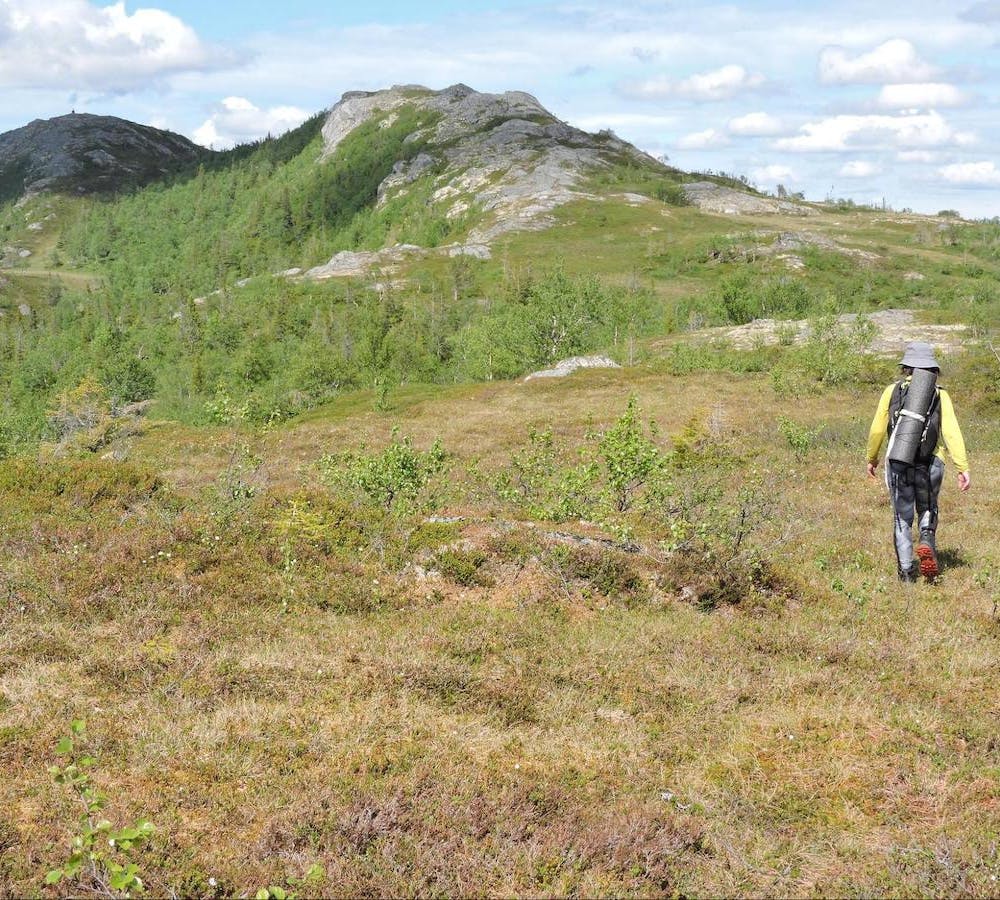
Addressing the risks, challenges and uncertainties
There is little to no experience of growing this high-altitude species of birch in Scottish nurseries which raises some important questions for our attempts: Do the trees need to start life at high altitude? How do we guarantee the best germination rates? Will genetic impoverishment from wild trees be an issue? Will seedling/sapling mortality be high for these trees in the harsh upland environment? How to mitigate the impacts of the deer density problem?
Our approach will involve an element of trial and error to help navigate these challenges. However, we will also look to examples from Norway and draw on the knowledge and experience from the Norwegian Institute for Nature Research. From their experience, viable mountain birch seed can grow like a weed, not needing to begin life at high altitude. To reduce the risk of mortality from harsh upland weather, planting will be undertaken in relatively sheltered locations as we build up mutual shelter from established trees, and we could potentially plant willows to act as nurse trees (larger, faster-growing trees that shelter smaller, slower-growing ones). We will facilitate discussions between Scottish tree nursery managers and practitioners in Norway to address any additional challenges that may arise. In regards to the issue of deer densities, we will prioritise distributing seeds to sites where densities are low or fencing is able to protect young saplings.
We would like to thank Mossy Earth members for making this project possible. With their support, we have a chance to bring back the birch belt, and enhance Scotland’s uplands with more intact, diverse woodlands.
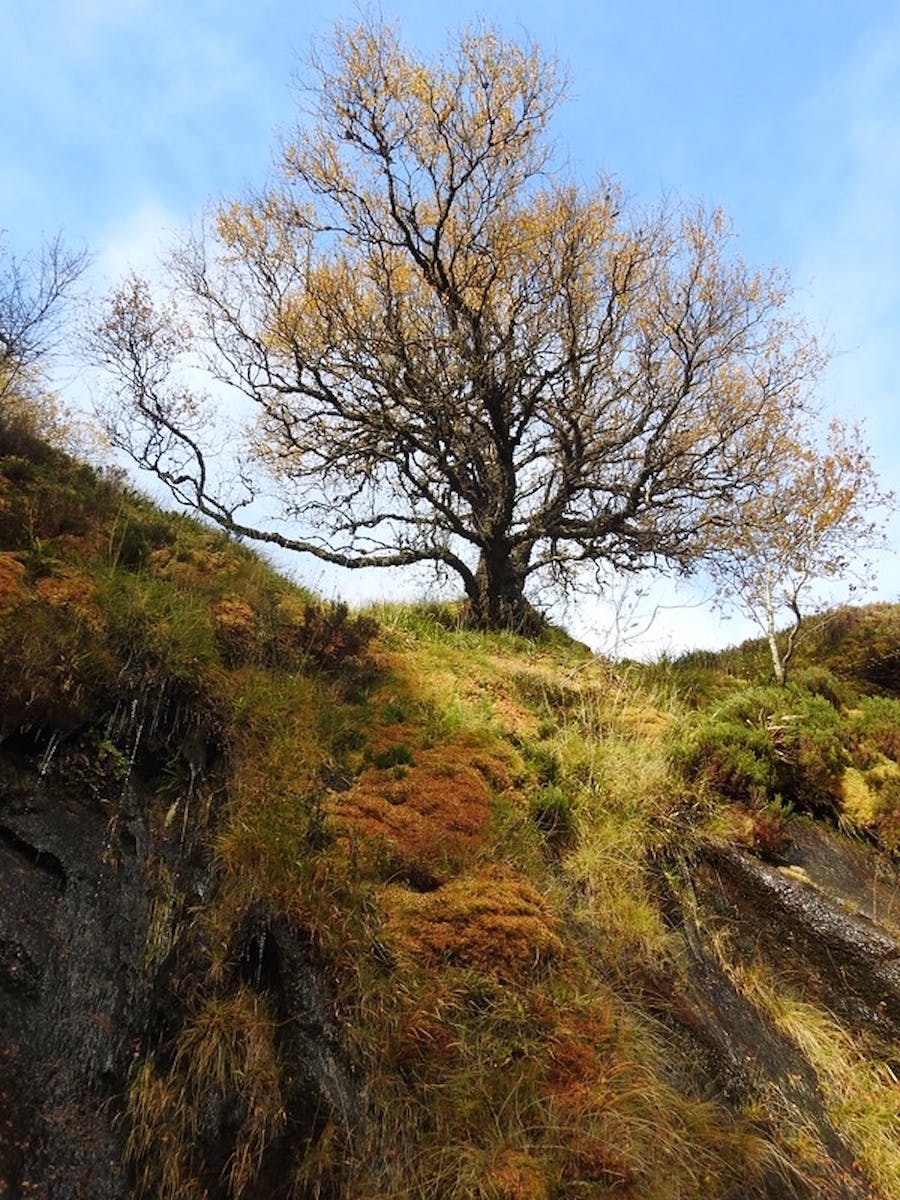

Scotland's Montane Woodlands
Below is a selection of images of mountain woodlands with varying degrees of habitat in the Scottish uplands.
Project Discussion
Gus Routledge from Reforesting Scotland joins Mossy Earth Community Manager, Meija, in a discussion that goes in-depth on the Mountain Birch Project.
the team behind the project

Gus Routledge, Director, Reforesting Scotland

Hannah Kirkland, Conservation Biologist, Mossy Earth
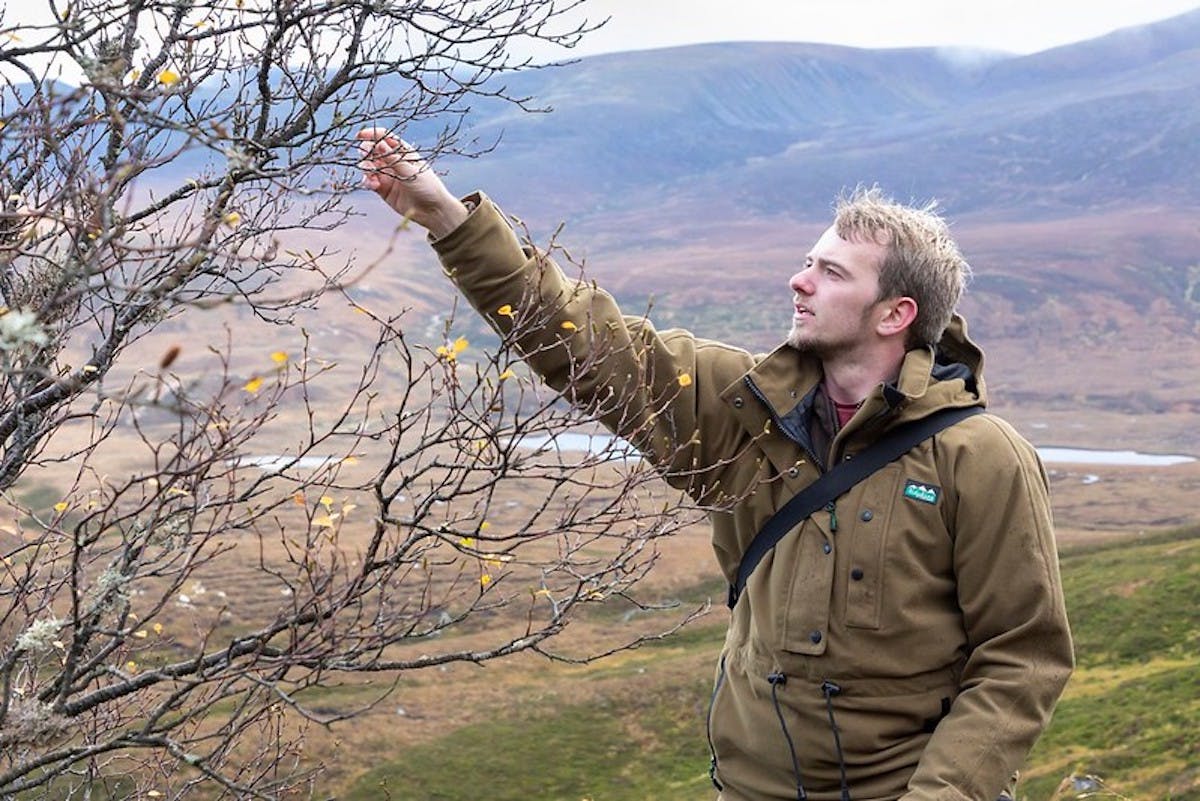
Sources & further reading

- “Montane Scrub” - Scottish National Heritage
- “Land use in Norway and Scotland” - NINA
